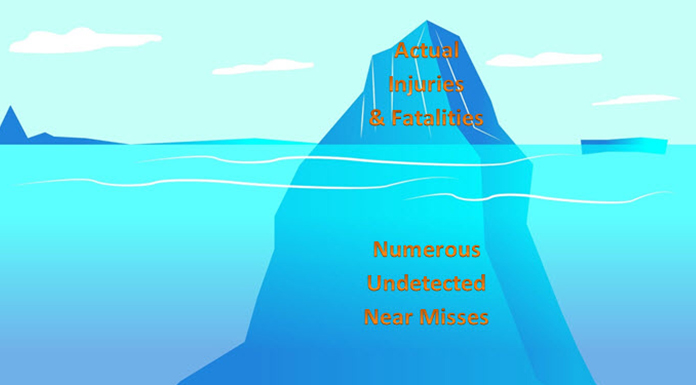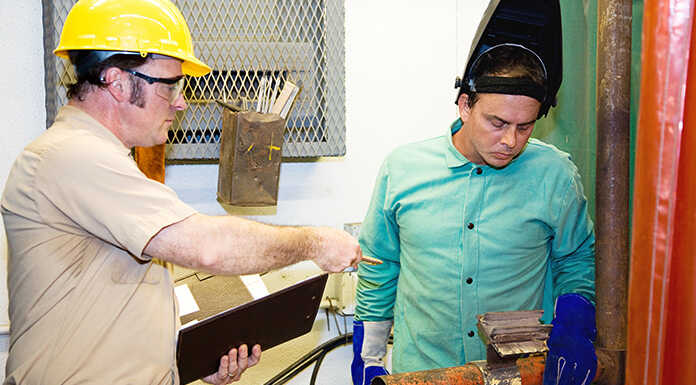Events are happening every day at facilities throughout the US that employers are not aware of. These events are close calls where something occurs and almost causes an accident, injury, property damage, or could have caused a fatality. Another term for the close call is a “near miss.”
Often the participants or “victims” of the event keep it to themselves or try to hide it for fear of getting in trouble. They may be shaken from the event or not even recognize it as something to act on.
One common safety model uses an iceberg theory where the near miss events occur under the surface undetected, then after a certain number of events occur actual injuries and property damage occur eventually leading to a fatality.

Although that model was challenged recently, it is clear that near misses have causation and root causes/conditions are frequently the same as causation for accidents, injuries, and fatalities. Without this valuable data, safety program efforts operate with a blind spot.
A near miss report brings the potential for preventative/corrective action BEFORE an incident occurs. Reporting near misses and having a system to manage the data can help reduce risk, claims and loss potential.
A near miss reporting program creates a system that does the following:
- Communicates what a near miss is by defining the terminology and how the company is going to use it (i.e. a near miss at XYZ Company includes…).
- Provides a clear and easy method to report the near miss such as an actual index card or card style via computer, a near miss section in the existing EHS enterprise system, or via safety committee members.
- Establishes a process for reviewing, prioritizing, and acting on near miss reports (i.e. red, yellow, green flags with action requirements, action required on all near misses, or only items deemed appropriate by the committee).
- Encourages participation by employees.
Best practices for near miss reporting also incorporate the data into a forward-looking metrics system where the data can be counted and measured. For instance, the following items could be counted as a result of a near miss report:
- The report itself
- A corrective or preventative action as a result of the report
- A behavior or process improvement developed as a result of the report
- Capital or expense used to mitigate the item
- Risk score reduction for that task based on implementing preventative actions
The near miss process is a living-program where forward-looking metrics may be able to aid in redirecting or steering safety efforts. Establishing an annual review can help identify metrics that had the biggest effect on safety and risk, thus shifting focus toward more of that work; discontinuing in areas that sounded good but didn’t really help.

















